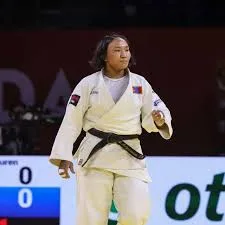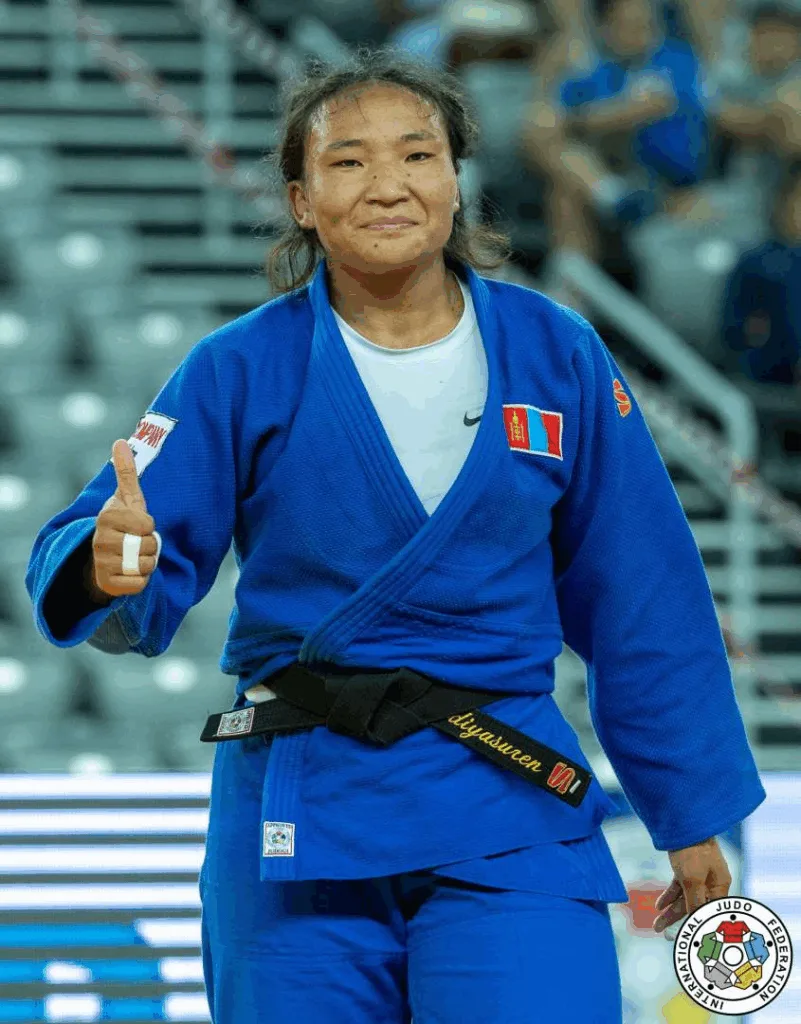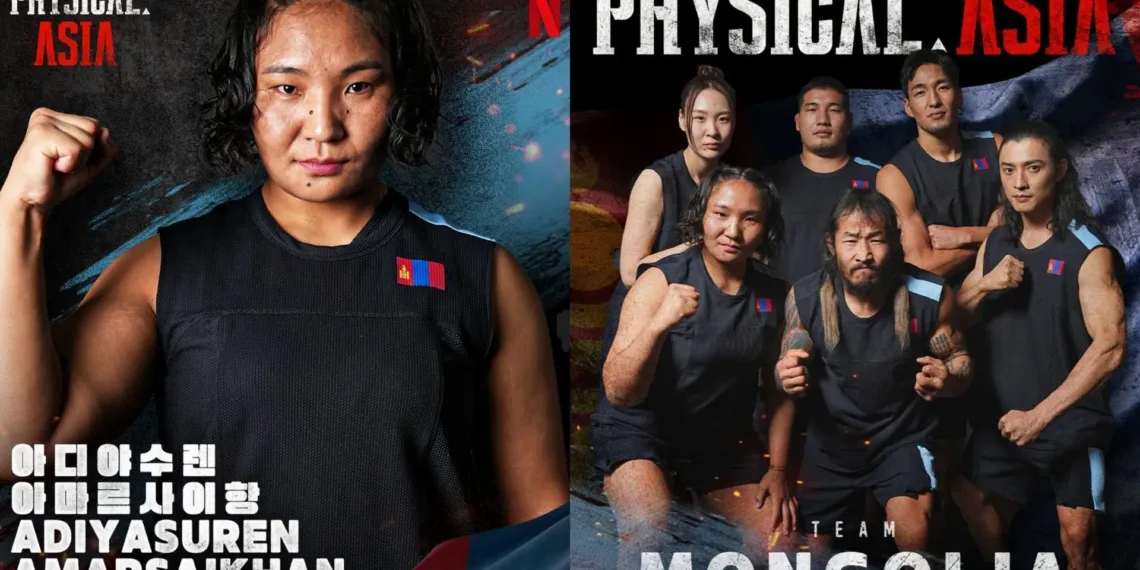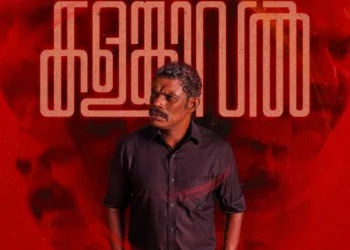While Team Korea ultimately claimed victory in Physical: Asia’s finale, one competitor captured hearts across the globe—Adiyasuren Amarsaikhan from Team Mongolia. Her incredible strength, unwavering determination, and inspiring teamwork turned her into one of the season’s most beloved athletes. Here’s everything you need to know about this remarkable judoka who proved women can match men blow-for-blow in the most grueling physical competition.
Table of Contents
Adiyasuren Amarsaikhan: Quick Profile
| Detail | Information |
|---|---|
| Full Name | Amarsaikhany Adiyaasüren (Adiyasuren Amarsaikhan) |
| Birth Date | March 26, 2000 (Age 25) |
| Nationality | Mongolian |
| Sport | Judo (+78 kg heavyweight division) |
| Olympic Appearance | 2024 Paris Olympics (Team Mongolia) |
| Major Achievements | Bronze at 2022 Asian Games, Silver at Asian Championships |
| Team | Team Mongolia (Physical: Asia) |
| Team Finish | Runner-up (Lost to Team Korea in finale) |
From Olympic Mats to Netflix Screens
Adiyasuren isn’t just a reality TV contestant—she’s an elite athlete competing at the highest international level. As a member of Mongolia’s national judo team, she competes in the +78 kg heavyweight division, one of the most demanding weight classes in women’s judo.
Her credentials speak volumes: she competed at the 2024 Paris Olympics representing Mongolia and has earned multiple medals including a bronze at the 2022 Asian Games in Hangzhou after defeating India’s Tulika Maan with ippon (the highest score in judo). She also claimed silver at the 2024 Asian Championships and continues to rank among Asia’s top judoka.
These weren’t just participation trophies—these were hard-fought victories against world-class competitors, proving her strength and technical skill on the international stage long before Physical: Asia cameras started rolling.
For more inspiring athlete stories and sports coverage, check out our sports features section.

The Pillar Push Challenge That Made Her a Legend
Episode 4’s Pillar Push became Adiyasuren’s defining moment. When Team Korea, Team Mongolia, and Team Australia competed in pushing a 1,200-kg pillar for 100 laps, viewers watched in awe as Adiyasuren and teammate Khandsuren led the charge alongside Orkhonbayar.
What made this moment extraordinary? The unwavering support from her male teammates. As Adiyasuren and Khandsuren completed their grueling laps, their teammates never doubted them. Orkhonbayar stood firm in his confidence, Dulguun and Enkh-Orgil cheered loudly, and Lkhagva-Ochir emotionally praised them afterward, saying his girls cried but performed brilliantly.
Fans flooded social media celebrating the moment: “Throughout the entire competition, the one and only woman who could truly go head-to-head and match the men blow for blow was a Mongolian woman. Pure pride. 🇲🇳🔥”
The Stone Totem Endurance: Breaking Records
If the Pillar Push showcased her strength, the Stone Totem Endurance revealed her superhuman willpower. Paired with teammate Enkh-Orgil Baatarkhuu, Adiyasuren held two 135-kg stone totems for an astonishing 41 minutes and 39 seconds—beating all other teams by a landslide, with competitors tapping out under 20 minutes.
This wasn’t just physical strength—it was mental fortitude. Judo training teaches athletes to endure discomfort and push past mental barriers, skills that translated perfectly to Physical: Asia’s brutal challenges.
How Mongolia Selected Their Dream Team
Adiyasuren’s participation almost didn’t happen. When asked to join Physical: Asia, she was training with Mongolia’s national judo team, and her coach initially said no, insisting she focus solely on training. It took the president of the Mongolian Judo Association personally stepping in to secure her participation.
This wasn’t a casual casting decision. Mongolia created a National Project to select their best six athletes from 200 candidates, filtering them through three rigorous stages. The Mongolian government and sports organizations treated this as a matter of national pride, ensuring their team represented the absolute best their country could offer.
The dedication paid off—Team Mongolia became fan favorites not just for their strength but for their sportsmanship, teamwork, and genuine camaraderie.

Team Mongolia’s Journey to the Finals
Team Mongolia’s path through Physical: Asia was nothing short of remarkable. They survived multiple elimination rounds, showcasing versatility across different challenge types:
Death Match Dominance: Using traditional Mongolian wrestling techniques combined with modern athletic training
Shipwreck Salvage: Demonstrating teamwork and strategic thinking under pressure
Castle Conquest: When time ran short, Enkh-Orgil devised the winning strategy of using a wooden ram to lift the 880-kilo bridge
Final Showdown: Reaching the ultimate face-off against Team Korea, pushing the hosts to their absolute limits
Though they ultimately fell to Team Korea in the finale’s Wall Pushing and Iron Ball Dragging matches, their performance earned worldwide respect and admiration.
For more reality competition coverage and behind-the-scenes insights, visit our entertainment section.
Why Adiyasuren Became a Global Inspiration
In a competition dominated by massive strongmen, MMA fighters, and Olympians, Adiyasuren proved that elite female athletes deserve equal recognition. She didn’t compete in a separate women’s category—she competed directly against and alongside men, holding her own at every turn.
Her story resonates because it challenges outdated assumptions about women’s physical capabilities. Judo, with its emphasis on technique, leverage, and mental strength rather than just raw power, prepared her perfectly for Physical: Asia’s diverse challenges.
Social media exploded with praise for how Team Mongolia treated their female members as equals, never doubting their abilities and celebrating their achievements with genuine pride. This representation matters—it shows young athletes worldwide that gender doesn’t determine your limits.
The Physical: Asia Phenomenon
Physical: Asia premiered on Netflix on October 28, 2025, as a spinoff of the wildly popular Korean series Physical: 100. Unlike its predecessor, which featured only Korean contestants, Physical: Asia expanded internationally with eight countries competing: South Korea, Japan, Thailand, Mongolia, Indonesia, Turkey, Australia, and the Philippines.
The show’s format emphasizes national pride and team dynamics, with the winning country claiming bragging rights plus one billion Korean won (approximately $700,000). The finale aired on November 18, 2025, with Team Korea securing victory in an emotional final battle against Team Mongolia.
Creator Jang Ho-gi explained the vision: “At its heart, the Physical series is about raw competition that transcends disciplines and generations. By bringing national pride into the equation, the battles will be more intense, more emotional, and more unforgettable than ever.”
What’s Next for Adiyasuren
While Team Mongolia didn’t win the competition, Adiyasuren’s performance elevated her profile globally. Her Instagram following has exploded with international fans, and she’s become an ambassador for both Mongolian judo and women’s strength sports.
Beyond the show, she continues training for upcoming international judo competitions, including potential qualification for future Olympic Games and Asian Championships. Her Physical: Asia experience has only added to her mental toughness and competitive edge.
For fans wanting to follow her journey, Adiyasuren remains active in the international judo circuit, with results regularly updated on the International Judo Federation’s official website.
For the latest updates on Physical: Asia contestants and other reality competition shows, explore our reality TV coverage.
The Legacy Team Mongolia Left Behind
Though they finished as runners-up, Team Mongolia’s impact on Physical: Asia extends far beyond their placement. They demonstrated that smaller nations can compete with powerhouse countries when they combine traditional sporting heritage with modern training methods.
More importantly, they showed the world what genuine team spirit looks like—no egos, no internal conflicts, just six athletes supporting each other unconditionally toward a common goal. In an era where reality TV thrives on manufactured drama, Team Mongolia’s authentic camaraderie felt refreshingly real.
FAQs
Q: Did Adiyasuren win any individual challenges on Physical: Asia?
A: While Physical: Asia focused on team competitions rather than individual victories, Adiyasuren excelled in multiple challenges. Her most impressive performance was the Stone Totem Endurance, where she and partner Enkh-Orgil held 135-kg totems for 41 minutes and 39 seconds—more than double what other teams achieved. She was also instrumental in Team Mongolia’s success during the Pillar Push challenge, leading her team to complete all 100 laps and advance to the finals.
Q: Can international fans follow Adiyasuren’s judo career after Physical: Asia?
A: Absolutely! Adiyasuren continues competing in international judo tournaments in the +78 kg heavyweight division. Fans can track her competition results through the International Judo Federation (IJF) official website and JudoInside, which maintain updated profiles with her tournament placements. She also participates in major events like the Grand Slam and Grand Prix circuits, Asian Championships, and is working toward future Olympic qualification. Following Mongolia’s national judo team social media accounts is another great way to stay updated on her career progress.








